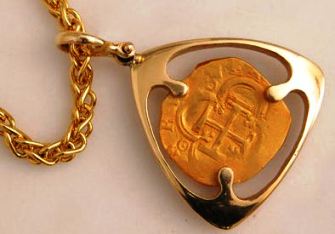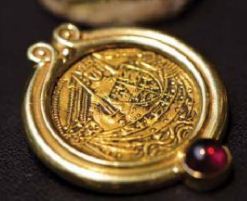Treasure Coins Found In Shipwrecks
The original cobs or treasure coins are those that were mostly hand struck and trimmed at the Spanish mints during the 1500s through 1700s. There were silver and gold cobs minted in Spanish colonies like Peru, Mexico and Bolivia. Right from the 1500s, the Spanish ships used to transport loads of such precious cargo from South and Central Americas to ports in Spain such as Cadiz and Seville. They needed to cross the hazardous water areas around Bermuda that were full of treacherous reefs.
And often, the ships would be struck by an underwater reef and get wrecked. While in some occasions the crew were able to salvage the treasures, in many cases the wrecked ship became a prey to the local Bermudians who looted the cargo. This once became a way of living for many locals in Bermuda. The treasure coins came primarily in two forms - Pieces of Eight that referred to the silver Spanish dollar (8 reales), and Doubloons for gold coins.
A person named Richard Moore was once hired as a specialist diver to search for pearls in Bermuda waters. Although such effort eventually became futile, he was the first to design the Bermuda Tub in 1612 which was a primitive form of diving bell made with wine casks.
Once lowered into a wreck site, a diver in this tub could stay underwater for about 45 minutes. It was later used in 1641 to recover huge amount of silver from the wreck The Conception. This ship was wrecked near Hispaniola carrying loads of silver and gold.
In another occasion in 1715, a Spanish Plate Fleet sank off the coast of Florida due to hurricane. While the Spanish crew were engaged in salvaging the cargo, their base camp was invaded by Henry Jennings who fled with 120,000 Spanish dollar coins (i.e. silver coins that were also known as Pieces of Eight). Jennings later became a gentleman and lived his retired life in Bermuda.
Coming to the original designs of the treasure coins or cobs as they are known as, you will always find that there is a centrally placed Jerusalem Cross on one side of the coin. Additionally this side of the coin would have two castles and lions. This signifies the union of the kingdoms Castille (meaning Castle) and Leon (i.e. Lion) that took place when King Ferdinand married Isabella.
Their marriage resulted in an united empire that finally led to the formation of the nation of Spain. Around the circumference, you will see an inscription in Latin bearing the King's name and also the sentence "KING OF SPAIN AND OF THE INDIES BY THE GRACE OF GOD".
A Doubloon mounted on a triangle frame
It was minted in Seville, Spain (1598-1621)
during the reign of Phillip III
The second side of the coin could have two possible designs. One type is the Shields with basic Hapsburg design. While the details would depend on the King of the period when the coin was minted, the various parts of the shield showed provinces where the King distinguished his Royal heritage. In this version, you will find a clock pointing to 11 o'clock, mint mark to the left and the denomination figure to the right.
The second design on the opposite side of a treasure coin is the Pillars and Waves. It is like a tic-tac-toe design. The centrally placed pillars represent the Pillars of Hercules that symbolized the gate on the Mediterranean sea, while the waves below signifies the Atlantic Ocean.
There is a two or three digit clock on bottom center. The denomination is at the top center. The mint mark is on upper left and lower right corners. In this version there is a Latin inscription "PLUS ULTRA" that translates to "More Beyond". It implies that beyond the Pillars of Hercules and the Atlantic, there is a New World (America) which too belonged to Spain.
A gold half noble minted during the
time of King Henry-V (year 1413-1422).
Bermuda law today does not allow anyone to keep anything that are directly salvaged from a wrecked ship. However, you will find magnificent pieces of eight as well as doubloons on sale at some jewelry shops on
Front Street. They are beautifully framed on gold or other metals, and serve as pendants or brooches. One such well known shop is Walker Christopher Goldsmith.
Unlike the current day coins, the original treasure coins did not have uniform shapes or sizes. They were far from being round and often had non-uniform thickness. They were accepted as good currency all around the world. The coins were referred as "Pieces of Eight" (silver 8 reales or a Spanish dollar) and as "Doubloons" (any gold coin but originally represented 2 escudos).
|
 By Raj Bhattacharya By Raj Bhattacharya
Raj, a seasoned travel writer and Bermuda destination expert, has extensive global travel experience. This website reflects his profound insights, garnered over nearly two decades of dedicated findings and research on the island. Raj has assisted countless Bermuda-bound visitors by providing direct, personalized responses to their queries and imparting his wealth of knowledge through this platform. This site serves as an indispensable guide for those seeking informed and reliable insights into Bermuda's treasures.
|
Related Articles
1) Check out
Bermuda Jewelry to know about jewelry designs in Bermuda and the best stores.
2) Visit
Bermuda Shipwrecks to know about amazing stories of those famous ships that were wrecked in Bermuda waters.


 By Raj Bhattacharya
By Raj Bhattacharya